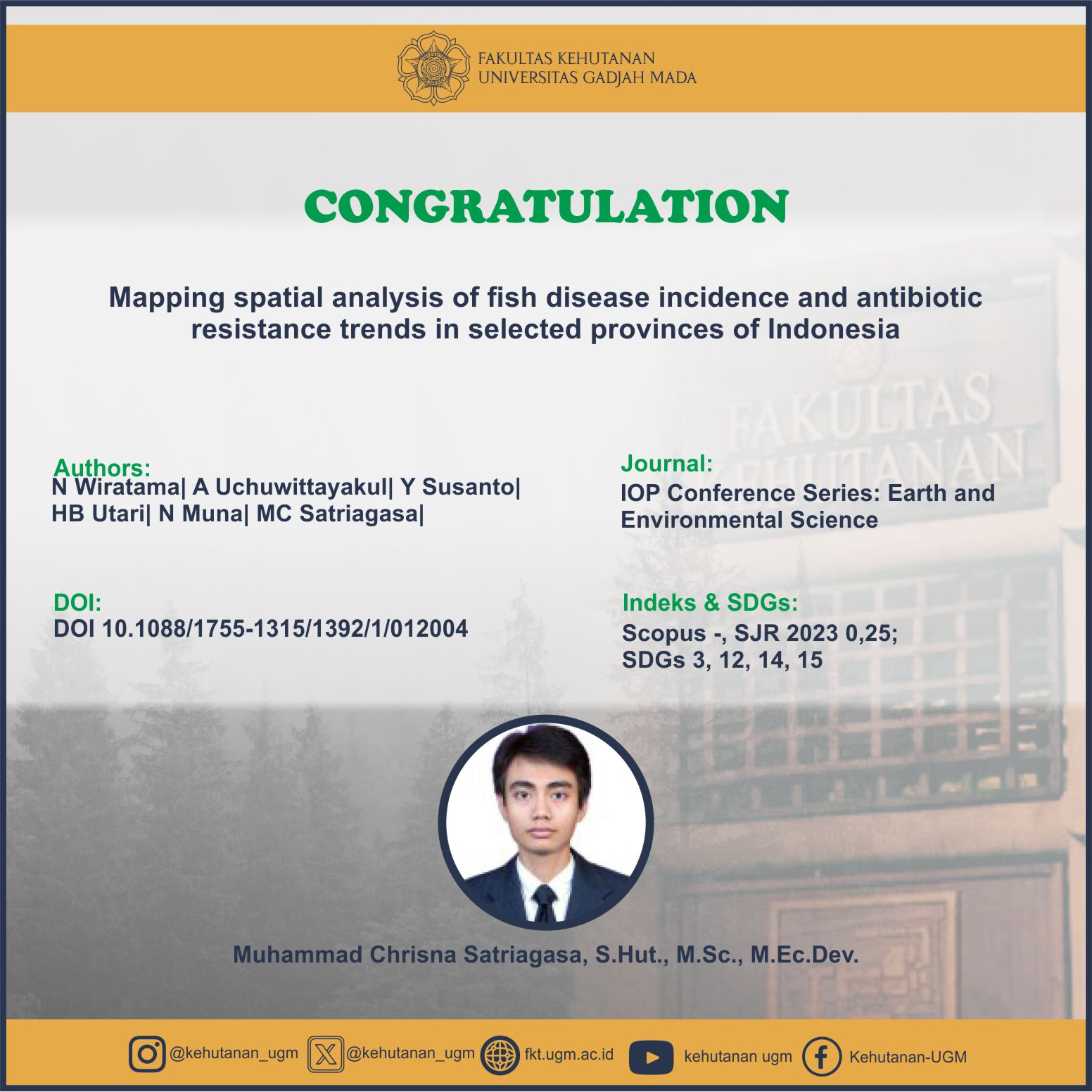
Abstract
Monitoring and visiting farmers affected by fish mortality is imperative. It offers insights into fish disease mapping and the trend of antibiotic resistance, serving as a fundamental for future strategies for preventing and treating fish diseases. The data collection was carried out by visiting farmers who suffered from fish mortality in 2022 in East Java, South Kalimantan, and Bali provinces. A total of 128 samples of infected fish were collected and analyzed using PCR and standard microbiological methods, and the findings were analyzed using spatial analysis and visual interpretation. Based on PCR results, the prevalence of fish diseases showed 65% iridovirus cases in gourami and tilapia, 31% in tilapia was TiLV, and 4% were Francisella sp. infection in tilapia. According to the results of microbiological tests, 86% of Edwardsiella tarda samples in pangasius were resistant to Oxytetracycline. Aeromonas sp. infection was the highest case in catfish, 58% were sensitive to Sulfamethoxazole. Streptococcosis was a typical tilapia disease that was 62% susceptible to Enrofloxacine and Sulfamethoxazole. Cases of Nocardia sp. and Staphylococcus sp. infection in gourami were found to be 71% intermediate to Enrofloxacine and Oxytetracycline, respectively.
SDGs:
SDG 3: Good Health and Well-being
SDG 12:Responsible Consumption and Production
SDG 14: Life Below Water
SDG 15: Life on Land
Link Dokumen:
Download
